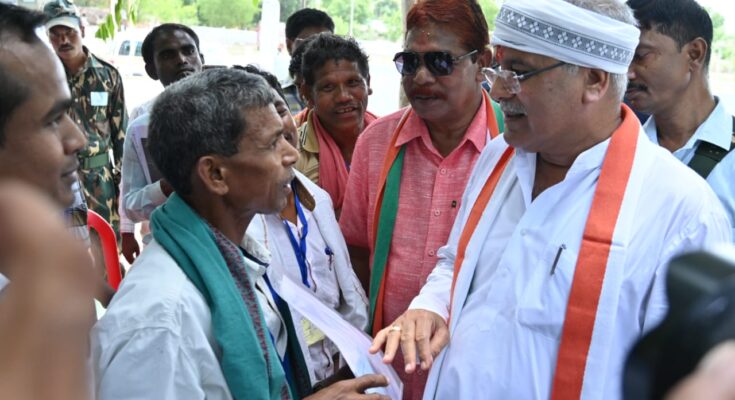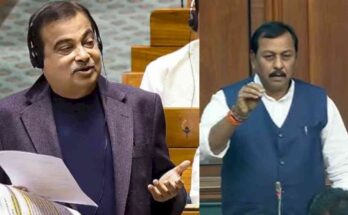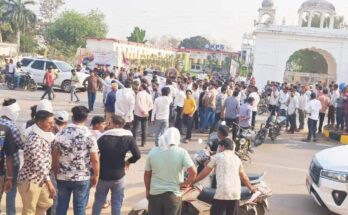 Chhattisgarh and Adivasi are synonymous with each other. The forests of Chhattisgarh and the tribals who have lived here for centuries have been the identity of the state. About half of the state’s land is covered with forest, where the glorious primitive culture of Chhattisgarh has flourished. Three and a half years ago from today, taking a pledge to build New Chhattisgarh, Chief Minister Bhupesh Baghel started the initiative to give all the rights to the tribals, due to which today the relationship of tribals with forests has once again strengthened and new in their lives. Morning has come. The state is inhabited by 42 notified tribes and their sub-groups. The most populous tribe of the state is the Gond, which is spread throughout the state. While the Oraon, Kanwar, Pando tribes are inhabited in the northern region of the state, there is a majority of tribes like Madia, Muria, Dhurwa, Halba, Abujhmadia, Dorla in the south Bastar zone.
Chhattisgarh and Adivasi are synonymous with each other. The forests of Chhattisgarh and the tribals who have lived here for centuries have been the identity of the state. About half of the state’s land is covered with forest, where the glorious primitive culture of Chhattisgarh has flourished. Three and a half years ago from today, taking a pledge to build New Chhattisgarh, Chief Minister Bhupesh Baghel started the initiative to give all the rights to the tribals, due to which today the relationship of tribals with forests has once again strengthened and new in their lives. Morning has come. The state is inhabited by 42 notified tribes and their sub-groups. The most populous tribe of the state is the Gond, which is spread throughout the state. While the Oraon, Kanwar, Pando tribes are inhabited in the northern region of the state, there is a majority of tribes like Madia, Muria, Dhurwa, Halba, Abujhmadia, Dorla in the south Bastar zone.  The tribes residing in Chhattisgarh have a rich cultural heritage, which is expressed through their daily life, Teej, festivals and religious customs and traditions. The Ghotul system of the tribes of Bastar is famous. The major dances of the tribes are Gaur, Karma, Kaksar, Shaila, Sarhul and Parab which are popular among the masses. Traditional songs, music, dance, musical instruments of the tribes, Chhattisgarh government has made a commendable effort to bring art and culture to the world stage along with saving and grooming in the last three and a half years. The grand event of the International Tribal Dance Festival is a part of this effort. The establishment of the museum at the Tribal Research and Training Institute, Raipur by the State Government is actually an attempt to save the rich art and culture of the tribals and the cultural heritage associated with their lives for centuries. A memorial-cum-museum is being constructed at Purkhauti Muktangan in Nava Raipur Atal Nagar in 10 acres of land at a cost of about Rs.25 crore 66 lakh in the memory of the first martyr of Chhattisgarh Shri Virnarayan Singh. In this, a live introduction of freedom fighters of the tribal class of the state will be available to the research students and common people of the state and the country. It is being done in Muktangan. In this, a live introduction of freedom fighters of the tribal class of the state will be available to the research students and common people of the state and the country. It is being done in Muktangan. In this, a live introduction of freedom fighters of the tribal class of the state will be available to the research students and common people of the state and the country.
The tribes residing in Chhattisgarh have a rich cultural heritage, which is expressed through their daily life, Teej, festivals and religious customs and traditions. The Ghotul system of the tribes of Bastar is famous. The major dances of the tribes are Gaur, Karma, Kaksar, Shaila, Sarhul and Parab which are popular among the masses. Traditional songs, music, dance, musical instruments of the tribes, Chhattisgarh government has made a commendable effort to bring art and culture to the world stage along with saving and grooming in the last three and a half years. The grand event of the International Tribal Dance Festival is a part of this effort. The establishment of the museum at the Tribal Research and Training Institute, Raipur by the State Government is actually an attempt to save the rich art and culture of the tribals and the cultural heritage associated with their lives for centuries. A memorial-cum-museum is being constructed at Purkhauti Muktangan in Nava Raipur Atal Nagar in 10 acres of land at a cost of about Rs.25 crore 66 lakh in the memory of the first martyr of Chhattisgarh Shri Virnarayan Singh. In this, a live introduction of freedom fighters of the tribal class of the state will be available to the research students and common people of the state and the country. It is being done in Muktangan. In this, a live introduction of freedom fighters of the tribal class of the state will be available to the research students and common people of the state and the country. It is being done in Muktangan. In this, a live introduction of freedom fighters of the tribal class of the state will be available to the research students and common people of the state and the country.
Of the 28 districts of the state of Chhattisgarh, 14 districts are wholly included in the 5th Schedule of the Constitution and six districts partially. The sex ratio of the tribal community of the state is exemplary not only for Chhattisgarh but for the country. There is a pleasant feeling about the sex ratio of 1013 females per 1000 males in this community. The Government of Chhattisgarh is striving to make the tribal areas and their lives happy and prosperous. This is the reason that the faith of the tribals has been established in the system.
Chief Minister Mr. Bhupesh Baghel says that in Lohandiguda, the return of farmers’ land, by increasing the collection rate of tendu leaves from Rs. 2500 per standard bag to Rs. 4000 per standard bag, 65 types of minor forest produce have been purchased at support price and by doing value addition, we have not Not only has the income of the forest dwellers increased, but employment opportunities have also been created. The Chhattisgarh government is taking steps for the betterment of the tribal community with full sensitivity and promptness to resolve every issue. Chhattisgarh is the leading state in the country in the matter of giving lease of forest land to the forest dwellers. So far, more than 4 lakh 54 thousand individual forest rights letters, 45,847 community forests and 3731 gram sabhas have been allotted land of more than 38 lakh 85 thousand hectares by distributing community forest resource rights letters, which is the life of more than 5 lakh forest dwellers. – The basis of livelihood has been formed.
In order to make the lives of forest dwellers easier, Chhattisgarh government is providing leveling, bunds, irrigation facilities as well as fertilizer-seeds and agricultural implements by the Government of Chhattisgarh. Forest dwellers cultivating on forest land have started getting the benefits of government schemes like common farmers. Under the Rajiv Gandhi Kisan Nyay Yojana, a provision of giving input subsidy of Rs. 9 thousand per acre has been made to tribals who cultivate Kodo-Kutki, Ragi in abundance in Vananchal. For the first time in the state, a total of Rs.16 crore 58 lakh was purchased for Kodo-Kutki at the rate of Rs.3377 per quintal and Rs.3377 per quintal. Kodo-Kutki, Mission Millet has been launched to promote the production of crops like Ragi and increase the income of farmers through value addition. Forest produce has a very deep connection with the life of the tribals. The government has now liberated the forest dwellers from middlemen.
Regular air service has been started for the rapid development of Bastar zone. Modern facilities have been provided at Jagdalpur Airport. This airport has been named after the adorable goddess Maa Danteshwari of Bastar. Expansion of airstrip has been started at Maa Mahamaya Airport in Darima to start air service at Ambikapur soon. All the hospitals from Bijapur to Balrampur have been equipped with state-of-the-art equipment. These hospitals have facilities for treatment and testing of various diseases including obstetrics facility, pathology lab with maternal and child care and dentistry. In order to provide health facilities in Haat-Bazaars, medicines are being distributed through Medical Ambulance to the inaccessible villages along with free test and treatment facility under Mukhyamantri Haat Bazar Clinic Yojna. A special campaign was launched in Bastar division to save from the outbreak of malaria.
An entire generation of 14 villages, including Jagargunda, a remote Naxal-affected area of Sukma district, was deprived of education for 13 years, now school buildings have been repaired here. Hundreds of closed schools have also been restarted in the districts of Bijapur and Bastar divisions. At present, 9 Prayas residential schools are operating in the state, from where 97 students are getting education from IIT, 261 students NIT and Triple IT, 44 students MBBS and 833 students are getting technical education by getting admission in engineering colleges. There are 73 Eklavya residential schools operating in the state. In the academic session 2022-23, 18 thousand 984 students are studying in Eklavya schools.
4200 hectares of land belonging to 1707 farmers of Lohandiguda in Bastar zone which was acquired for a private steel plant. This land has been returned to the farmers. Out of the orange forest area in the districts of Bastar division, 30 thousand 429 hectare land has been registered back under revenue head. With this, land will be made available for agriculture, industry and infrastructure construction in Bastar region. For the first time after independence, 2500 farmers of Abujhmad region have been given Masahati Patta. Survey of 18 villages of Abujhmad has been completed, survey of two villages is going on.
Raipur: Special article on World Tribal Day: Winds of change in tribal life




